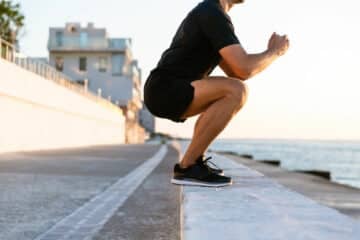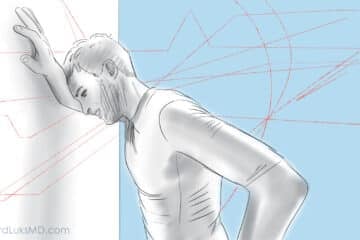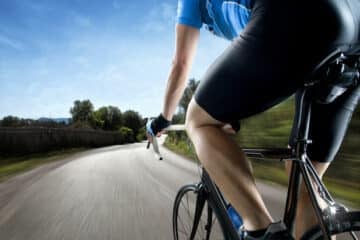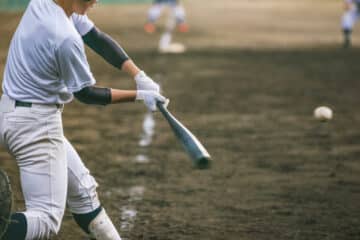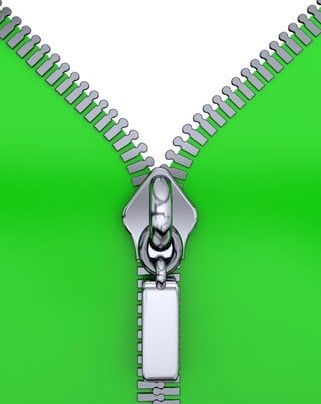
Athletes are always seeking a competitive advantage. Compression wear to improve recovery is all the rage. Since recovery can be viewed as an advantage, backing claims with science is noteworthy. Athletes of all shapes and sizes are putting on their compression socks and sleeves before they head out to compete. Should this behavior continue?
The market for compression wear has boomed over the past few years. There are now sleeves, tights, shorts, shirts, socks, and more, leaving people to wonder… do these actually work?
Compression and Performance
Does compression wear improve performance? When it comes to performance, the answer depends on your activity. For endurance exercise, there is not much evidence to suggest that compression wear enhances performance. Studies of endurance cycling (Scanlan et al. 2008) and running (Ali et al. 2011; Sperlich et al.) did not find significant performance benefits when comparing the times of athletes wearing compression wear to the times of those wearing conventional, non-compressive clothing.
However, for explosive exercises that require maximal strength and power, the evidence appears more promising. Although the effect sizes are small, they are nevertheless present in some studies on vertical jumping height (Doan et al. 2003) and short-duration sprints (Hamlen et al. 2012). Further, even in studies that did not find a significant effect on sprinting performance, athletes perceived less effort (Faulkner et al. 2013).
There are several mechanisms by which compression wear may enhance strength and power exercises (see Figure 1 below, from Born et al. 2013). For instance, compression clothing supports hemodynamics by improving venous return and arterial blood flow (Born et al. 2013). This may aid in the removal of metabolites like lactate, which can build up in your bloodstream during high-intensity exercise. Also, compression clothing improves proprioception, or “the awareness of the body segments and position in space” (Born et al. 2013). This can enhance muscle activation and muscle-fiber-recruitment, which, in turn, enhances power production. And, of course, part of this improvement in performance can be due to the placebo effect, since participants in the compression group cannot be blinded to the treatment.
Can Compression Wear Improve Recovery?
By far the most significant effect of compression wear is on recovery following exercise. A number of scientific studies reveal that compression wear reduces perceived muscle soreness (Davies et al. 2009; Duffield et al. 2008; Jakeman et al. 2010; Kraemer et al. 2001). This may be because the external pressure gradient from compression promotes lymphatic outflow, resulting in decreased osmotic pressure and thus a decreased inflammatory response (Hill et al. 2014; Born et al. 2013).
In addition to its effect on athletes’ perception of soreness, a meta-analysis by Hill et al. (2014) of 12 studies showed that compression wear actually causes performance measures of strength and power to recover at a faster rate of up to 69% and 66%, respectively.
Further, various studies show that compression wear reduces concentrations of creatine kinase (CK), a marker of muscle damage (Davies et al. 2009; Duffield et al. 2007; Kraemer et al. 2001). This is likely because compression causes “an attenuation in the release of CK into the bloodstream, improved clearance of metabolites, and enhanced repair of the muscle” (Hill et al. 2014).
Conclusion
Compression garments will not transform you into a star athlete (sorry!), but compression wear might improve your performance slightly in sports that require spurts of strength or power. However, if you were thinking about purchasing compression clothing, you should not be discouraged. A growing body of scientific literature suggests that there is a lot to be gained from wearing compression clothing for recovery purposes after exercise, meaning the compression market is far from just a fad!
Another great guest post by:
Angelina Noriega
Cornell University, Class of 2015
Bibliography
Ali, A., Creasy, RH., & Edge, JA. (2011). The effect of graduated compression stockings on running performance. J Strength Cond Res, 25 (5), 1385-1392. Retrieved from http://www.ncbi.nlm.nih.gov/pubmed/21293307.
Born, DP., Sperlich, B., & Holmberg, HC. (2013). Bringing light into the dark: effects of compression clothing on performance and recovery. Int J Sports Physiol Perform, 8 (1), 4-18. Retrieved from http://www.ncbi.nlm.nih.gov/pubmed/23302134.
Davies, V., Thompson, KG., & Cooper, SM. (2009). The effects of compression garments on recovery. J Strength Cond Res, 23 (6), 1786-1794. Retrieved from http://www.ncbi.nlm.nih.gov/pubmed/19675482.
Doan, BK., Kwon, YH., Newton, RU., Shim, J., Popper, EM., Rogers, RA., Bolt, LR., Robertson, M., & Kraemer, WJ. (2003). Evaluation of a lower-body compression garment. J Sports Sci, 21 (8), 601-610. Retrieved from http://www.ncbi.nlm.nih.gov/pubmed/12875311?dopt=Abstract.
Duffield, R., Edge, J., Merrells, R., Hawke, E., Barnes, M., Simcock, D., & Gill, N. (2008). The effects of compression garments on intermittent exercise performance and recovery on consecutive days. Int J Sports Physiol Perform, 3 (4), 454-468. Retrieved from http://www.ncbi.nlm.nih.gov/pubmed/19223671.
Faulkner, JA., Gleadon, D., McLaren, J., & Jakeman, JR. (2013). Effect of lower-limb compression clothing on 400-m sprint performance. J Strength Cond Res, 27 (3), 669-676. Retrieved from http://www.ncbi.nlm.nih.gov/pubmed/22592172.
Do you have questions regarding an Orthopedic injury or longevity?
Do you want to talk to an expert who can listen to you for 45-60 minutes and explain the options in detail?
Dr. Howard Luks offers remote guidance sessions to review your X-ray or MRI images and explain your options.
Dr. Luks has also received hundreds of requests for educational sessions on the topics discussed in his book, Longevity Simplified.
Hamlin, MJ., Mitchell, CJ., Ward, FD., Draper, N., Shearman, JP., & Kimber, NE. (2012). Effect of compression garments on short-term recovery of repeated sprint and 3-km running performance in rugby union players. J Strength Cond Res, 26 (11), 2975, 2982. Retrieved from http://www.ncbi.nlm.nih.gov/pubmed/23007487.
Hill, J., Howatson, G., Someren, KV., Leeder, J., & Pedlar, C. (2014). Compression garments and recovery from exercise-induced muscle damage: a meta-analysis. J Sports Med, 48, 1340-1346. Retrieved from http://bjsm.bmj.com.
Jakeman, JR., Byrne, C., & Eston, RG. (2010). Lower limb compression garment improves recovery from exercise-induced muscle damage in young, active females. Eur J Appl Physiol, 109 (6), 1137-1144. Retrieved from http://www.ncbi.nlm.nih.gov/pubmed/20376479.
Kraemer, W., Bush, J., Wickham, R., Denegar, C., Gomez, A., Gotshalk, L., Duncan, N., Volek, J., Putukian, M., & Sebastianelli, W. (2001). Influence on Compression Therapy on Symptoms Following Soft Tissue Injury from Maximal Eccentric Exercise. Journal of Orthopaedic & Sports Physical Therapy, 31 (6), 282-290. Retrieved from http://www.jospt.org.
Scanlan, AT., Dascombe, BJ., Reaburn, PR., & Osborne, M. (2008). The effects of wearing lower-body compression garment during endurance cycling. Int J Sports Physiol Perform, 3(4), 424-438. Retrieved from http://www.ncbi.nlm.nih.gov/pubmed/19223669?dopt=Abstract.
Sperlich, B., Haegele, M., Achtzehn, S., Linville, J., Holmberg, H., & Mester, J. (2010). Different types of compression clothing do not increase sub-maximal and maximal endurance performance in well-trained athletes. Journal of Sports Sciences, 28 (6), 609-614. Retrieved from http://www.tandfonline.com/doi/abs/10.1080/02640410903582768.


